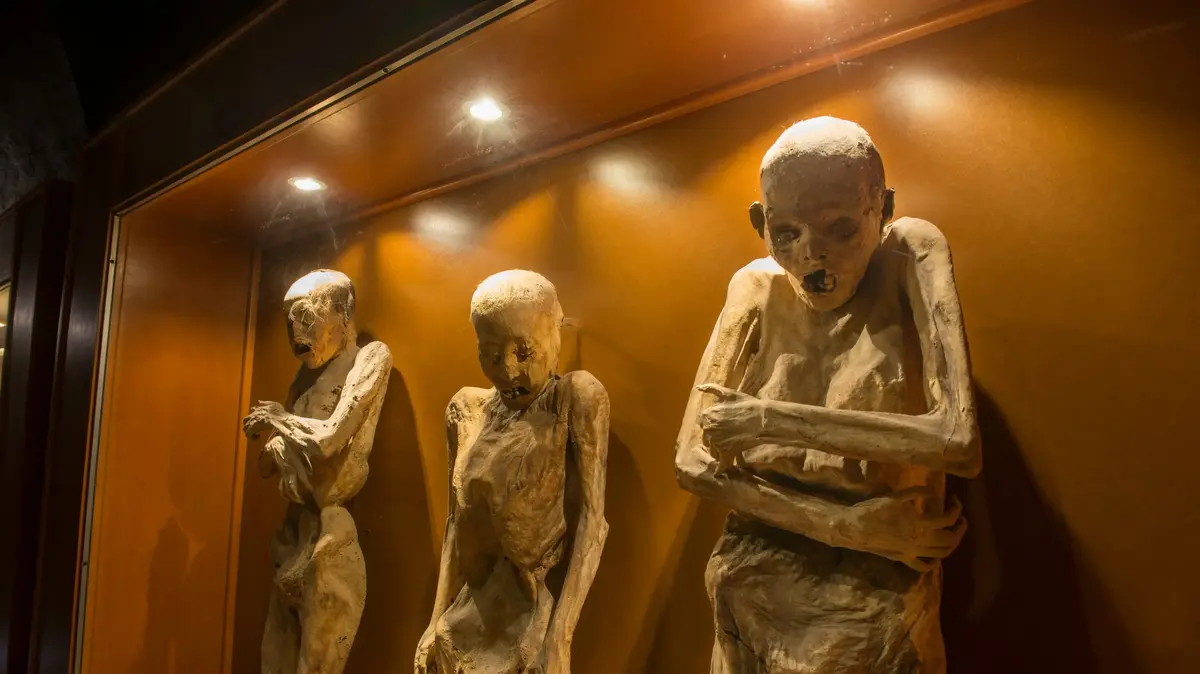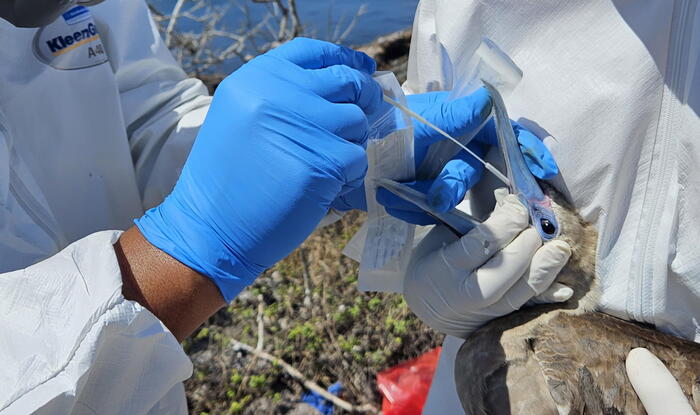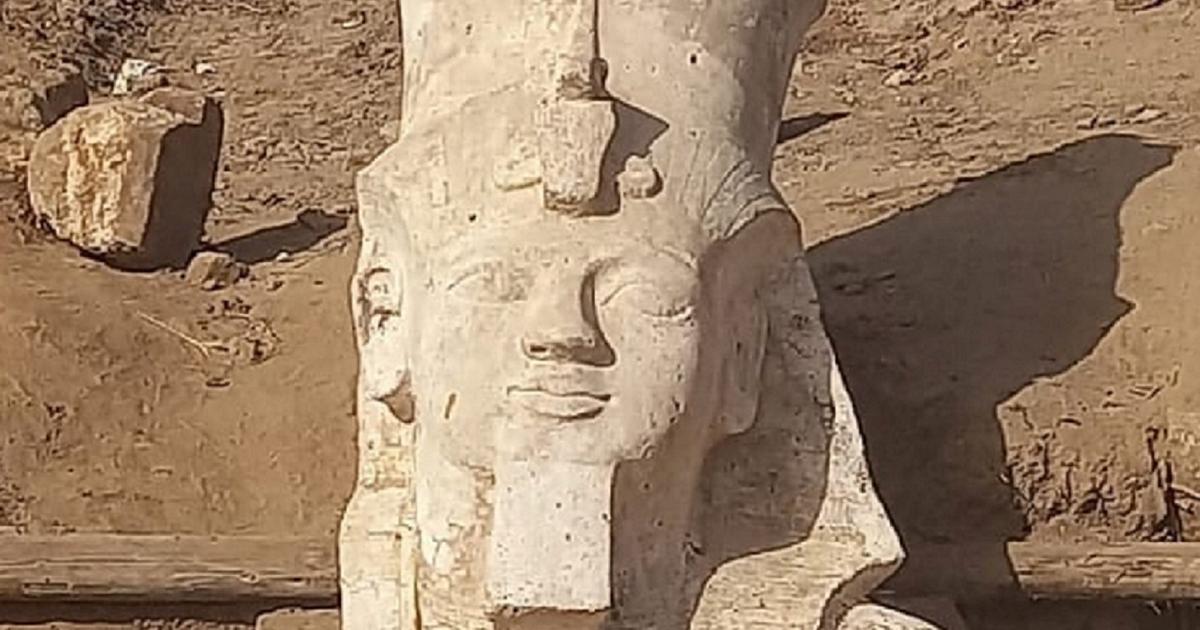Mummies at the Guanajuato Museum in Mexico (@jean.custicafe)
Mummy exhibitions in Mexico caused great panic among experts after one of the exhibition organizers discovered signs of life in one of the mummies.
This is a unique collection of mummies from more than 2,000 years ago, but unlike what we see in the movies, there is no danger that one of the mummies will resurrect and attack us.
But the organizers of the exhibition expressed concern that one of the mummies showed signs of fungal growth.
This is a sign of life that greatly worried the experts that it is an open display and therefore there is a considerable chance that the tourists who come to the place will be infected by this mummy - due to the fact that there are not enough security measures in place to prevent the other mummies from being damaged and infected with the fungus.
@miamiherald Signs of life in #mummy exhibit in #Mexico ♬ original sound - Miami Herald
Alejandro Navarro, who is in charge of this exhibition, informed that the mummies were transferred to them from the USA under strict protocols and while adhering to the recommendations of the experts. The
Guanajuato mummies were shown to the public for the first time in the USA in 2009, but recently moved to Mexico City, where the museum displayed six mummies in glass cases , which led to criticism because it is not clear how opaque this glass is.
Don't call her mummy
Museums around the world are changing the name of mummies
To the full article
View this post on Instagram
A post shared by Rademenes (@rademenes80)
More about mummies
First discovery in the world of a pregnant mummy: "We identified a tiny foot in her stomach"
59 mummies that removed their brains through the nose, were discovered in Egypt
View this post on Instagram
A post shared by All about death (@nothingelsebutdeath)
View this post on Instagram
A post shared by MyLe Ho (@mylotusaadventures)
View this post on Instagram
A post shared by Joanne Thurston (@joannethurston)
"It is even more alarming that the mummies are still on display without security personnel to make sure that the tourists do not get too close and do not get infected," said the Institute of Anthropology and History in Mexico, "at least according to the photos published in November 2021, it seems that one of the mummies has grown mushrooms that are dangerous to the public. It is alarming and strange that an inspection did not was carried out before transferring them to us".
According to the publication in popularmechanics magazine, fatal fungal infections of mummies are certainly not a common occurrence, but they have certainly happened in the past.
10 of the 12 scientists present at the opening of the tomb of King Casimir IV in Poland in 1970 died within weeks of the event, apparently from fungi.
And this is not the only example recorded in history, the most famous of which is the "Curse of the Pharaohs" according to which at least six archaeologists died mysteriously after opening the famous tomb of Tut Ankh Amun in 1922.
But the reason for that urban legend about this curse is fake news and a conflict between journalists.
In the Channel 4 film Tutankhamon: Secrets of The Tomb, the anthropologist Ella El Samhi and Hacha spoke with experts on the curse, the pharaoh and Lord Howard Carter's expedition that discovered the tomb in 1922.
According to her findings, Arthur Weigel, an Egyptologist-turned-Daily Mail reporter, was the man who apparently started the story of the curse because he was upset that a rival reporter for The Times had been given exclusive access to the discovery of Tut Ankh Amon's tomb, And so he invented the story of the curse and made it familiar.
So what is the scientific explanation for the deaths?
"We discovered that the victims may have died of infection," she said. "Probably the fungus Aspergillus flavus was growing in the grave, which could have contributed to the deaths."
Indeed, on April 5, 1923, Lord's body was found at the Continental-Savoy Hotel in Cairo.
Although his death gave rise to the story of the "Curse of Tut Ankh Amon", which was also known as the "Curse of the Pharaohs", his death was most likely due to sepsis (which developed into pneumonia) as a result of accidentally shaving a rose-carrying mosquito bite, which caused the opening of the wound and a serious infection .
Among the explanations given for the phenomenon was the fact that the conditions in the tombs that were found endangered the health of those who frequented them - dark and stuffy spaces.
One of the claims made was that the cause of death was a fungus that grew at the site of the graves and infected the researchers.
In an article published in the press at the time, author Sir Arthur Conan Doyle hypothesized that a mold fungus was deliberately placed to punish the grave robbers.
In air samples taken from a closed sarcophagus through a drilled hole, high levels of ammonia, formalin and hydrogen sulfide were found;
These gases are poisonous, and some of the gases found - such as nerve gas - can harm the health of those who breathe them.
Today, archaeologists wear a kind of protective mask when they enter places with graves because they are aware that there is bacterial activity in such places that can penetrate open wounds and spread infection among them.
It should be remembered that despite the belief in the curse, most of those who participated in the opening of the tomb did not die years later, and some even lived longer.
According to Wikipedia, explanations such as poisonous fungus and poisonous gases do not explain why none of the 10 people who removed the shroud from the mummy died years later.
In addition, some of the deaths linked to the case occurred for reasons that cannot be linked to poisoning.
Thus, for example, a French archaeologist fell during the visit and died from his injuries.
An x-ray technician sent to examine the mummy died before reaching his destination.
And the father of Carnarvon's secretary, killed himself.
Even the discoverer of the tomb himself, Carter, only died in 1939 at the age of 64 from lymphoma.
tourism
news
Tags
mummies
Mexico


/cloudfront-eu-central-1.images.arcpublishing.com/prisa/2P2FATFESJDD5BB6NR7VLSJ7QY.jpg)












